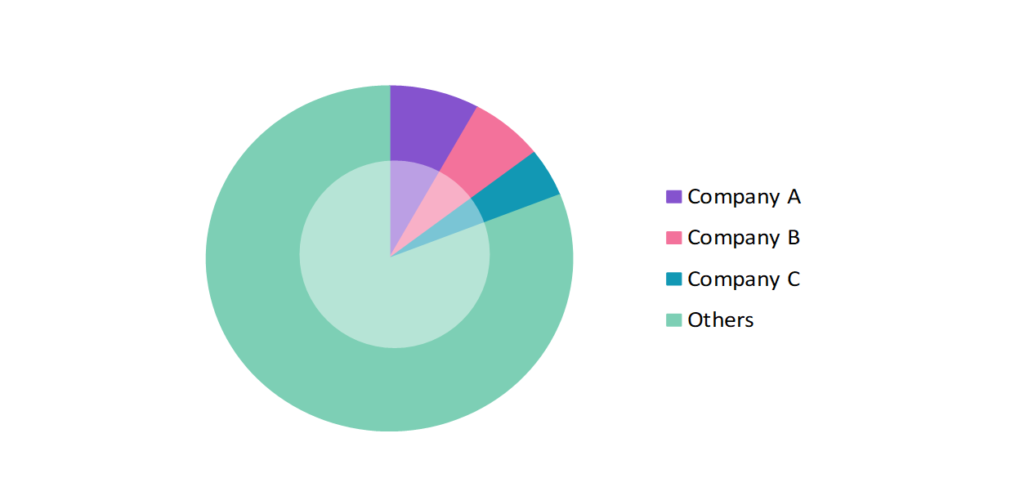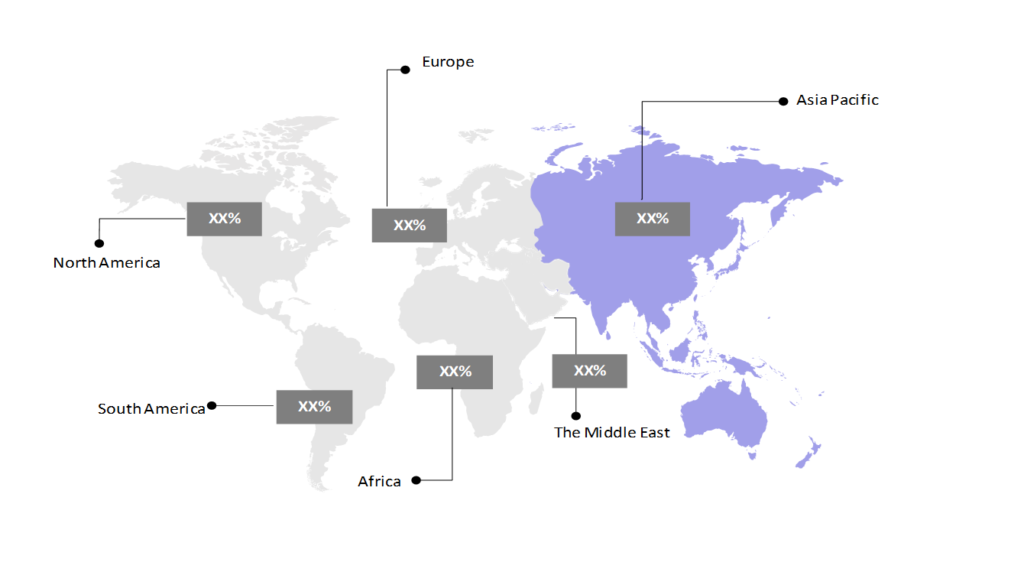Automotive Plastic Market: Size, Share, Trends & Forecast (2024-2029)
The market report offers a detailed analysis segmented by Product Type (Polypropylene (PP), Polyurethane (PU), Polyvinylchloride (PVC), Polyamide (PA), Acrylonitrile Butadiene (ABS) Styrene, High-Density Polyethylene (HDPE), Polycarbonate (PC), Polybutylene Terephthalate (PBT), Others); by Application (Interior, Exterior, Under Bonnet, Others); by Vehicle Type (Conventional Cars, Electric Cars); by Geography (North America, South America, Asia Pacific, Europe, The Middle East, Africa).
Outlook

- The automotive plastic market is estimated to be at USD 35,849.21 Mn in 2024 and is anticipated to reach USD 45,150.61 Mn in 2029.
- The automotive plastic market is registering a CAGR of 4.72% during the forecast period 2024-2029.
- The automotive plastics market is driven by the demand for lightweight materials, enhanced safety features, and luxury components. Innovations such as thermally stable and eco-friendly plastics are shaping the industry, though challenges like environmental regulations, fluctuating raw material prices, and recycling difficulties persist. As automakers focus on improving fuel efficiency and sustainability, the market is evolving rapidly to meet both performance and regulatory requirements.
Request a free sample.
Ecosystem

- The participants in the global automotive plastic industry are always developing their strategies to preserve a competitive advantage.
- Companies invest heavily in research and development to create advanced materials, such as high-performance composites and eco-friendly plastics, to stay competitive in a rapidly evolving market.
- Several important entities in the automotive plastic market include BASF Group; Saudi Basic Industries Corp.; LyondellBasell Industries N.V.; LG Chem, Ltd.; Dupont De Nemours, Inc.; and others.
Ask for customization.
Findings
| Attributes | Values |
|---|---|
| Historical Period | 2018-2022 |
| Base Year | 2023 |
| Forecast Period | 2024-2029 |
| Market Size (2024) | USD 35,849.21 Mn |
| Market Size (2029) | USD 45,150.61 Mn |
| Growth Rate | 4.72% CAGR from 2024 to 2029 |
| Key Segments | Product Type (Polypropylene (PP), Polyurethane (PU), Polyvinylchloride (PVC), Polyamide (PA), Acrylonitrile Butadiene (ABS) Styrene, High Density Polyethylene (HDPE), Polycarbonate (PC), Polybutylene Terephthalate (PBT), Others); Application (Interior, Exterior, Under Bonnet, Others); Vehicle Type (Conventional Cars, Electric Cars); Geography (North America, South America, Asia Pacific, Europe, The Middle East, Africa) |
| Key Vendors | BASF Group; Saudi Basic Industries Corp.; LyondellBasell Industries N.V.; LG Chem, Ltd.; Dupont De Nemours, Inc. |
| Key Countries | The US; Canada; Mexico; Brazil; Argentina; Colombia; Chile; China; India; Japan; South Korea; The UK; Germany; Italy; France; Spain; Turkey; UAE; Saudi Arabia; Egypt; South Africa |
| Largest Market | Asia Pacific |
Get a free quote.
Trends
- High-Performance Composites for Crash Protection: New composites that combine plastic with other materials like carbon fibers are being designed to improve crash protection and durability. These materials offer enhanced impact resistance while maintaining lightweight properties, which contributes to safer and more efficient vehicles. BMW’s i3 uses a Carbon Fiber Reinforced Plastic (CFRP) body frame to significantly reduce the vehicle’s weight while maintaining high crash protection standards.
- Recycled and Sustainable Plastics: Automakers are focusing on sustainability by integrating recycled plastics into vehicle components. Post-consumer recycled (PCR) plastics and bio-based plastics, such as those derived from natural sources like corn and sugarcane, are being used in interior and exterior parts to reduce environmental impact.
- Smart and Functional Plastics: Innovations in smart plastics are enabling features such as self-healing surfaces, adaptive temperature control, and integration with sensors for connected vehicle systems. These materials can enhance vehicle safety, comfort, and performance, such as electrochromic windows or self-cleaning surfaces.
Speak to analyst.
Catalysts
- Adoption of Lightweight Materials: The automotive industry’s ongoing push for fuel efficiency and reduced emissions is driving the demand for lightweight plastic materials. Plastics such as carbon fiber-reinforced composites and advanced polymers are increasingly replacing heavier metal components, which contributes to weight reduction without compromising structural integrity. This shift is critical as automakers strive to meet stringent environmental regulations and improve vehicle performance.
- Introduction of New Safety Features and Luxury Components: The growing integration of advanced safety systems and luxury features in vehicles is boosting the demand for high-performance plastics. Materials with enhanced durability, flexibility, and impact resistance are being used in airbags, crumple zones, and interior components, which ensure both safety and comfort. Additionally, premium finishes, soft-touch plastics, and noise-reduction materials are becoming popular in luxury vehicle interiors, driving market growth.
- OEMs’ Inclination Towards Thermally Stable Plastics: Original Equipment Manufacturers (OEMs) are increasingly turning to thermally stable plastics to improve the heat resistance of various automotive components. These materials are crucial for applications in electric vehicles (EVs) and high-performance engines, where managing heat and ensuring thermal stability are essential for efficiency and safety. As electric vehicle production grows, so does the demand for plastics that can withstand high temperatures without compromising performance.
Inquire before buying.
Restraints
- Environmental and Regulatory Pressures: Increasingly stringent regulations related to plastic waste and environmental impact pose a major challenge to the automotive plastics market. With growing global concern over pollution and sustainability, automakers and suppliers face pressure to reduce plastic use or shift to eco-friendly, recyclable materials. Compliance with evolving regulations, particularly in Europe and North America, can increase production costs and require innovation in materials.
- Fluctuating Raw Material Prices: The automotive plastics market is heavily influenced by the price volatility of raw materials, particularly petroleum-based plastics. As oil prices fluctuate, so do the costs of producing automotive plastics. This unpredictability affects the profitability of manufacturers and may force them to pass on costs to automakers or compromise on material quality.
- Recycling and Disposal Challenges: While there is a push towards recyclable plastics, not all types of automotive plastics are easily recyclable. The complexity of recycling multi-layered, reinforced, or composite plastics adds to disposal challenges. Developing effective recycling infrastructure and technology for automotive-grade plastics remains a significant barrier to large-scale adoption of eco-friendly practices.
Personalize this research.
Hotspot

Explore purchase options.
Table of Contents
| 1. Introduction 1.1. Research Methodology 1.2. Scope of the Study 2. Market Overview / Executive Summary 2.1. Global Automotive Plastic Market (2018 – 2022) 2.2. Global Automotive Plastic Market (2023 – 2029) 3. Market Segmentation 3.1. Global Automotive Plastic Market by Product Type 3.1.1. Polypropylene (PP) 3.1.2. Polyurethane (PU) 3.1.3. Polyvinylchloride (PVC) 3.1.4. Polyamide (PA) 3.1.5. Acrylonitrile Butadiene (ABS) Styrene 3.1.6. High Density Polyethylene (HDPE) 3.1.7. Polycarbonate (PC) 3.1.8. Polybutylene Terephthalate (PBT) 3.1.9. Others 3.2. Global Automotive Plastic Market by Application 3.2.1. Interior 3.2.2. Exterior 3.2.3. Under Bonnet 3.2.4. Others 3.3. Global Automotive Plastic Market by Vehicle Type 3.3.1. Conventional Cars 3.3.2. Electric Cars 4. Regional Segmentation 4.1. North America 4.1.1. The US 4.1.2. Canada 4.1.3. Mexico 4.2. South America 4.2.1. Brazil 4.2.2. Argentina 4.2.3. Colombia 4.2.4. Chile 4.2.5. Rest of South America 4.3. Asia Pacific 4.3.1. China 4.3.2. India 4.3.3. Japan 4.3.4. South Korea 4.3.5. Rest of Asia Pacific 4.4. Europe 4.4.1. The UK 4.4.2. Germany 4.4.3. Italy 4.4.4. France 4.4.5. Spain 4.4.6. Rest of Europe 4.5. The Middle East 4.5.1. Turkey 4.5.2. UAE 4.5.3. Saudi Arabia 4.5.4. Rest of the Middle East 4.6. Africa 4.6.1. Egypt 4.6.2. South Africa 4.6.3. Rest of Africa 5. Value Chain Analysis of the Global Automotive Plastic Market 6. Porter Five Forces Analysis 6.1. Threats of New Entrants 6.2. Threats of Substitutes 6.3. Bargaining Power of Buyers 6.4. Bargaining Power of Suppliers 6.5. Competition in the Industry 7. Trends, Drivers and Challenges Analysis 7.1. Market Trends 7.1.1. Market Trend 1 7.1.2. Market Trend 2 7.1.3. Market Trend 3 7.2. Market Drivers 7.2.1. Market Driver 1 7.2.2. Market Driver 2 7.2.3. Market Driver 3 7.3. Market Challenges 7.3.1. Market Challenge 1 7.3.2. Market Challenge 2 7.3.3. Market Challenge 3 8. Opportunities Analysis 8.1. Market Opportunity 1 8.2. Market Opportunity 2 8.3. Market Opportunity 3 9. Competitive Landscape 9.1. BASF Group 9.2. Saudi Basic Industries Corp. 9.3. LyondellBasell Industries N.V. 9.4. LG Chem, Ltd. 9.5. Dupont De Nemours, Inc. 9.6. Company 6 9.7. Company 7 9.8. Company 8 9.9. Company 9 9.10. Company 10 |
Know the research methodology.
Automotive Plastic Market – FAQs
1. What is the current size of the automotive plastic market?
Ans. In 2024, the automotive plastic market size is USD 35,849.21 Mn.
2. Who are the major vendors in the automotive plastic market?
Ans. The major vendors in the automotive plastic market are BASF Group; Saudi Basic Industries Corp.; LyondellBasell Industries N.V.; LG Chem, Ltd.; Dupont De Nemours, Inc.
3. Which segments are covered under the automotive plastic market segments analysis?
Ans. The automotive plastic market report offers in-depth insights into Product Type, Application, Vehicle Type, and Geography.
